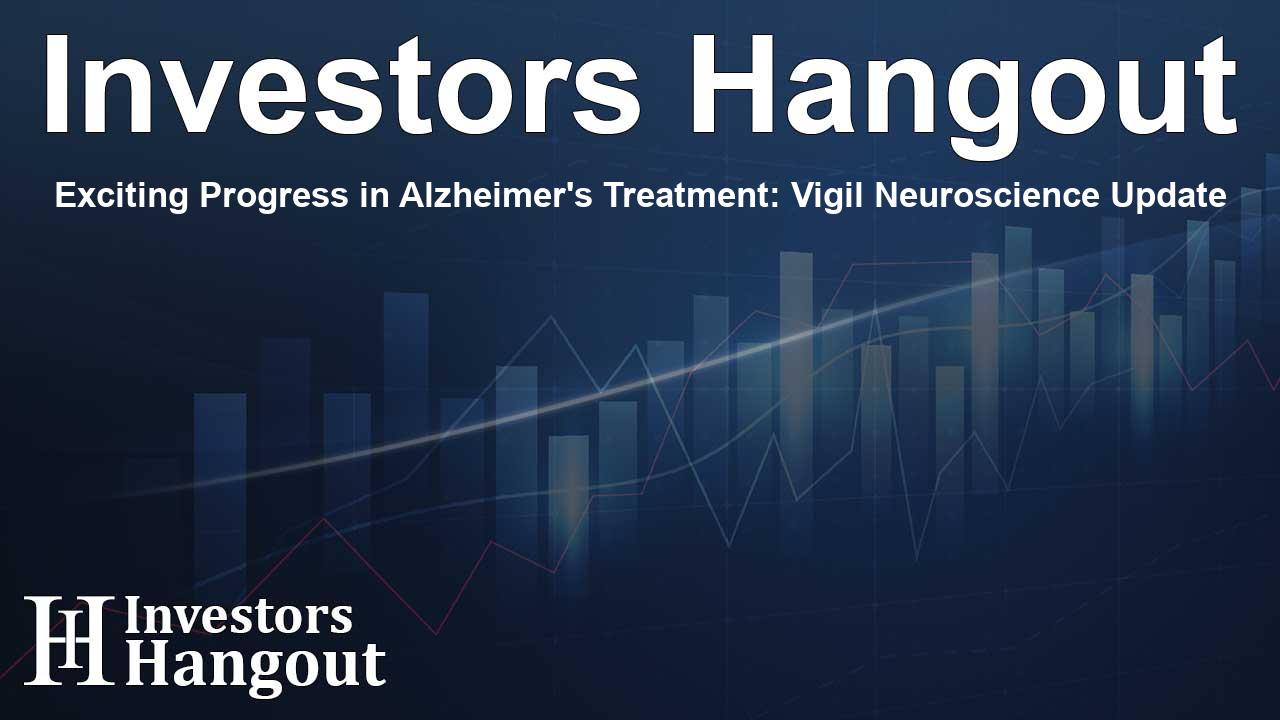Exciting Progress in Alzheimer's Treatment: Vigil Neuroscience Update

Vigil Neuroscience's Advancements in Alzheimer’s Disease Treatment
Vigil Neuroscience, a dynamic player in biotechnology, recently shared compelling results from its Phase 1 clinical trial evaluating VG-3927, a hopeful treatment for Alzheimer’s disease (AD). This innovative approach emphasizes the potential of microglia in the fight against neurodegenerative diseases.
Promising Results from the Phase 1 Clinical Trial
The trial successfully assessed the safety, tolerability, pharmacokinetic (PK), and pharmacodynamic (PD) properties of VG-3927. The findings revealed that VG-3927, designed as a once-daily oral therapy, demonstrated robust and consistent results, supporting its development into further clinical trials.
Understanding VG-3927's Mechanism of Action
VG-3927 functions as a small molecule TREM2 agonist, engaging neuroprotective pathways to combat Alzheimer’s disease. Unlike traditional therapies that typically focus on amyloid plaques, VG-3927 aims to address other contributors to disease progression, potentially offering a more comprehensive treatment approach for patients.
Key Outcomes from Phase 1 Trial
The trial included 115 participants, showcasing a well-tolerated profile across diverse cohorts, including the elderly, with no serious adverse events reported. Participants demonstrated favorable responses, with significant reductions in sTREM2 levels observed in the cerebral spinal fluid, indicative of effective target engagement.
Among the valuable insights, VG-3927's favorable safety profile, achieved through a predictable pharmacokinetic behavior, stands out. The therapeutic candidate showed a dose-dependent reduction in sTREM2 levels, demonstrating its potential for sustained engagement with target mechanisms within the brain.
Future Directions for VG-3927
With positive results in hand, Vigil Neuroscience is gearing up to advance VG-3927 into Phase 2 trials, slated for a 2025 initiation. The upcoming studies will focus on a 25mg daily dosage that has shown the potential to fully engage desired pharmacological effects.
Commitment to Innovation and Patient Care
CEO Ivana Magov?evi?-Liebisch expressed her enthusiasm regarding the trial's outcomes, highlighting VG-3927's unique profile as a Phase 2-ready therapy that could enhance treatment regimens for patients grappling with Alzheimer’s disease. This conviction reflects Vigil’s broader mission to harness the capabilities of microglia for a potential breakthrough in therapeutic strategies.
Continued Research and Development
Vigil's commitment to research is unwavering. With plans for further presentations at significant conferences, including the upcoming AD/PD™ International Conference, the company aims to keep the momentum going by sharing new data and insights that could redefine approaches to treating Alzheimer's disease.
The Impact and Importance of Vigil Neuroscience
As Vigil strives to develop innovative solutions in neurology, this milestone is a testament to the company’s focused efforts. With a pipeline that also includes Iluzanebart, a monoclonal antibody targeting TREM2 for adult-onset leukoencephalopathy, Vigil reinforces its unique position in addressing neurodegenerative conditions.
Vigil Neuroscience is dedicated to transforming the landscape of neurodegenerative treatments using cutting-edge science tailored to the needs of patients. By combining comprehensive datasets and advancing promising candidates like VG-3927, Vigil is on the path to potentially changing lives impacted by Alzheimer’s disease.
Frequently Asked Questions
What is VG-3927?
VG-3927 is an investigational oral therapy from Vigil Neuroscience, designed as a TREM2 agonist to address Alzheimer’s disease by engaging microglia.
What were the results from the Phase 1 clinical trial?
The Phase 1 trial showed a favorable safety profile, tolerability, and dose-dependent reductions in sTREM2 in participants, indicating robust pharmacological effects.
When is the Phase 2 trial for VG-3927 expected to start?
Vigil Neuroscience plans to initiate the Phase 2 clinical trial for VG-3927 in the third quarter of 2025.
What sets VG-3927 apart from traditional Alzheimer’s treatments?
VG-3927 offers a unique mechanism of action, targeting multiple pathways in AD, unlike many existing therapies that primarily focus on amyloid plaques.
How can interested investors and patients learn more about Vigil Neuroscience?
Information about Vigil’s projects and updates can be found on their official website, particularly in the 'Investors' section, where they regularly post significant updates.
About The Author
Contact Caleb Price privately here. Or send an email with ATTN: Caleb Price as the subject to contact@investorshangout.com.
About Investors Hangout
Investors Hangout is a leading online stock forum for financial discussion and learning, offering a wide range of free tools and resources. It draws in traders of all levels, who exchange market knowledge, investigate trading tactics, and keep an eye on industry developments in real time. Featuring financial articles, stock message boards, quotes, charts, company profiles, and live news updates. Through cooperative learning and a wealth of informational resources, it helps users from novices creating their first portfolios to experts honing their techniques. Join Investors Hangout today: https://investorshangout.com/
The content of this article is based on factual, publicly available information and does not represent legal, financial, or investment advice. Investors Hangout does not offer financial advice, and the author is not a licensed financial advisor. Consult a qualified advisor before making any financial or investment decisions based on this article. This article should not be considered advice to purchase, sell, or hold any securities or other investments. If any of the material provided here is inaccurate, please contact us for corrections.
